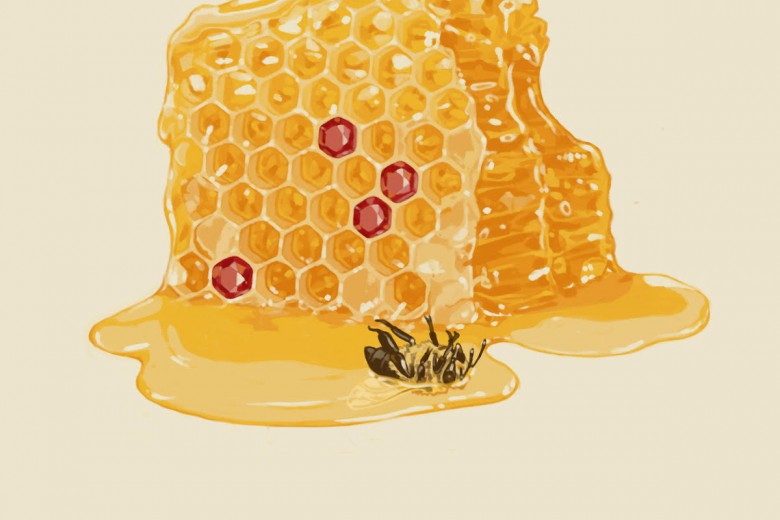
Jeffrey M. Smith is the Executive Director of the Institute for Responsible Technology and is an international bestselling author on the health risks of genetically modified foods.
In both of your books, Seeds of Deception and Genetic Roulette, you make reference to a 1996 study by Dr. Ãrpa Pusztai from the Rowett Institute in the United Kingdom. Why is this study so important?
Well, initially Dr. Pusztai was given a grant by the British government to develop the ideal safety testing protocol that would become the assessment process used by the European Union to approve genetically modified products. He found that the inherent process of genetic engineering can cause significant health damage. It was such incriminating evidence that it could have, by itself, ended the genetic engineering of the food supply – instead it ended his career.
He went public with his concerns with permission from his director, was a hero at the prestigious institute for about two days, and then allegedly two phone calls were made from the British Prime Minister’s office. The next morning Dr. Pusztai was fired from his job after 35 years, silenced with threat of a lawsuit, the 20-member research team was disbanded and they never instituted the long-term safety study protocol.
The specific nature of Dr. Pusztai’s studies is very revealing. He fed genetically engineered potatoes that had been engineered to produce an insecticide to a group of rats along with a complete and balanced diet, and he fed another group of rats natural potatoes, and a third group of rats natural potatoes that were spiked with the same insecticide that the genetically engineered potatoes were designed to produce – but only the genetically engineered potatoes produced massive damage to the rats. They had potentially precancerous cell growth in the digestive tract, smaller brains, livers and testicles, partial atrophy of the liver and damage to the immune system. Basically they were a mess after 10 days. This did not happen to the rats given the natural potatoes spiked with the insecticide; they were fine. So somehow it wasn’t the insecticide that caused the problem. It must have been the process of genetically engineering the potatoes – the same process that was used to create the genetically engineered crops currently on the market.
The safety assessments used to evaluate the crops that go to market are so superficial that those potatoes would have made it to the market if they had been tested by industry. A greater concern, however, was that the corn, cottonseed, canola and soy that was already on the market had been created from the same process that was used to create the potatoes. They might be creating the same problems in humans that Pusztai discovered in his rats, but they still have not been tested to that level. This is an example of not only the inherent safety issues related to genetic engineering but of the mechanism – the political and economic mechanism – used to stifle criticism and divert it, and to distract and deny criticism from problems that come up.
Are there certain symptoms that are more likely to arise from eating genetically modified foods?
There are a lot of potential risks, a lot of adverse findings, and there is very little follow-up on evidence, so you end up having to look at a lot of evidence to draw your conclusion because they don’t give us much. There have been fewer than three dozen peer-reviewed animal feeding safety studies in the world. Allergens, toxins, new diseases, nutrition problems – these were mentioned by the scientists at the U.S. Food and Drug Administration, and their overwhelming consensus was that genetically engineered foods might create these problems, and that they require long-term feeding studies and long-term safety studies before allowing them to be fed to human beings.
Despite this, the FDA policy claims the agency is unaware of any information that genetically modified organisms (GMOs) are significantly different, and on that basis they decided that no safety testing was necessary. Health Canada is only slightly better, in that they have a required review, but even that is a facade. In 2002, Health Canada said that they would look at the health of Canadians and see if genetically modified foods are causing problems. But before the end of the year they cancelled that study.
According to the only human feeding study ever conducted with GMOs, the gene that makes genetically modified soy resistant to Roundup actually transfers to the DNA of human gut bacteria and continues to function. This means that long after we stop eating genetically engineered soy, we still may have this potentially allergenic protein being produced inside our intestines – possibly for the rest of our lives. Now that is one very serious, potentially long-term problem. I would say there is more than enough evidence that genetically modified foods are inherently unsafe.
Soon after genetically modified soy was introduced into the U.K., soy allergies skyrocketed by 50 per cent. Now is that related to GMOs? We do not know because no follow-up was done.
So what is preventing labelling of these products? The last nine national surveys in Canada have all indicated that over 80 per cent of consumers want GM foods labelled. Is it just that policy-makers do not know the science behind the concerns?
Largely, policy-makers are quite insulated from the actual risks. They have been inundated by lobbyists and spin from the biotech industry claiming that these foods are needed to feed the world. In the United States, the FDA is mandated by the White House to promote the biotechnology industry, so they ignore the will of the nine out of ten Americans who want genetically modified foods labelled in order to protect the economic interests of the five biotechnology companies that make GMOs. They know their sales would suffer if genetically modified foods were labelled, because 53 per cent of Americans say they would not eat genetically modified foods if they were labelled. I am sure in Canada it is even higher. So we are in a situation now where it is corporate manipulation and political collusion that have allowed genetically modified foods onto the market, unlabelled and improperly tested. As a result, the self-replicating genetic pollution of GMOs is irreversibly transforming the environment.
The National Farmers Union in Canada says that since GMOs have been introduced, farmer profit has plummeted, and that is the case in many countries. There is a lot of spin about this, because GMOs do not increase average yields, they actually decrease the average yield, and they have potentially disastrous effects on the environment.
The current safety assessments in Canada, the United States, Europe, Australia, New Zealand and elsewhere are incompetent to even identify most of the health risks for humans.
What can consumers do to try to limit their exposure to genetically modified foods?
The first thing people need to do to protect themselves and their families is to buy products that are organic, buy products that voluntarily label that they are non-GMO or buy products that are in a non-GMO shopping guide. Avoid any product that contains any of the at-risk ingredients, which include corn, soy, cottonseed, canola and Hawaiian papayas. As of the autumn of 2008, farmers have begun harvesting genetically modified sugar beets, which means the entire sugar supply should be assumed to be genetically engineered unless it says “pure cane sugar,” “organic” or “non-GMO.” My expectation is that as we circulate the information about the health risks of genetically modified foods to millions of consumers, using genetically modified ingredients will become a marketing liability.






